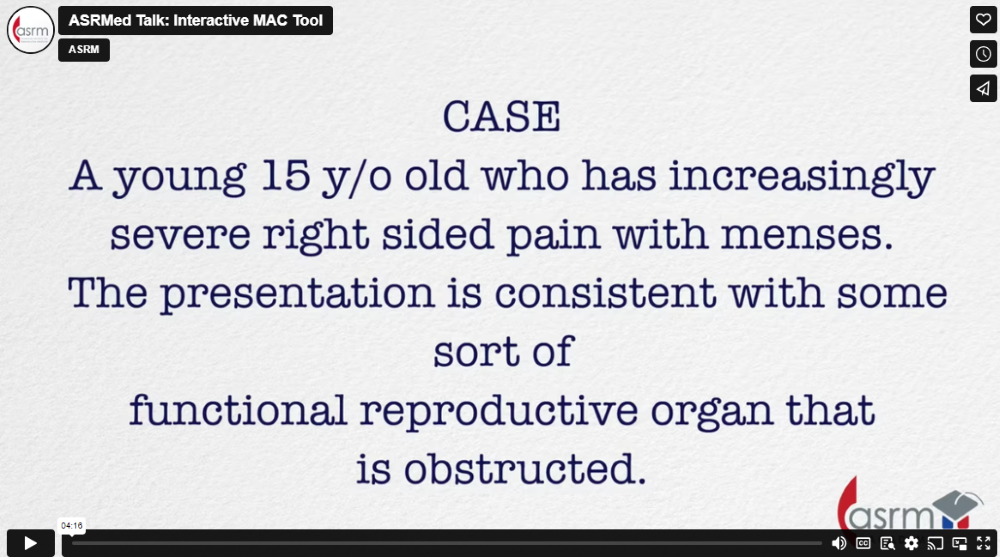
Transcript
Explore the diagnosis of a 15-year-old with right-sided pain using the ASRM Mac Tool to assess uterine anomalies, including uterus didelphys with obstructed hemivagina.
You are seeing a young 15-year-old who has increasingly severe right-sided pain with menses. The presentation is consistent with some sort of functional reproductive organ that is obstructed. Does this sound like it could be a uterus didelphys with obstructed hemivagina? Let's review this thought process and compare imaging options using the ASRM Mac tool.
So if we're thinking about, you know, could there be an obstruction, we can look at something like, you know, could it be a longitudinal septum or could there be issues with an abnormal uterus? And if we come back to, could it be a uterus didelphys with an obstructed hemivagina? So that's sort of what people think as a very common problem leading to one-sided pain. So that could, we could start with that, but then I think the question is, could it be something else? And so we're going to go to the similar to category, and these are all of the things that you can see that have associated, you know, obstruction. So you can have a bicollis uterus, you can have a complete septate uterus with an obstruction here, or you can have an isolated uterine horn.
So it's really important to think what are the different things that can give you typical menstruation through a patent side, but then have the obstructed side causing pain. And, you know, anytime you get one-sided dysmenorrhea, you've got to think there's an obstruction somewhere. At least I often think that.
The other thing that is important to recognize is that any type of unilateral obstruction is associated with ipsilateral renal agenesis. So that's also something to think about. So if we come here and say, well, maybe it is this uterus didelphys, or it could be even a complete septate uterus, but if we come here and say, what does this look like? In imaging, you can go and you can see different types of obstruction here, and we can go to the MRI tab, and here you can see what a normal uterus didelphys looks like.
And if you scroll down, you can see here, here is a uterus didelphys with an obstructed hemivagina, and you can see this massive hematoculpos, and this is a great image here showing this is the right-sided obstruction, and that there is the left hemivagina. So this is what this anomaly would look like on MRI, and you can use that to help, you know, see what your patient has and see if it's the same thing. Similarly, we can go and see what a unicornuate obstruction looks like, and here you can see with an obstructed horn, here is a nice normal uterus, and then here is an obstructed horn, or it can be a unicornuate uterus with a closely associated obstructed horn.
So there's certain, you know, many, many different options you have here, but they all look very different on the MRI, and so I think it's important to use the tool to try and refine your diagnosis and then move forward, and then once you know sort of what you have, then say if we find out we do have the uterus didelphys with obstructed hemivagina, then we can go to the uterus didelphys home page and look at treatment options and see how we would potentially treat this condition, and you can see here the treatments are listed as you're resecting the obstructed vaginal septum, resection of the hemiuterus may be necessary, and so I think that we can look at different treatment options here to help us figure out how we need to treat this patient.
ASRMed Talks
Check out more ASRMed Talks
Genetics: Counseling Fertility Couples About Their Evaluation
Caitlin Hebert discusses fertility counseling, the importance of carrier screening, and overcoming barriers for patients while highlighting the role of genetic counseling.






